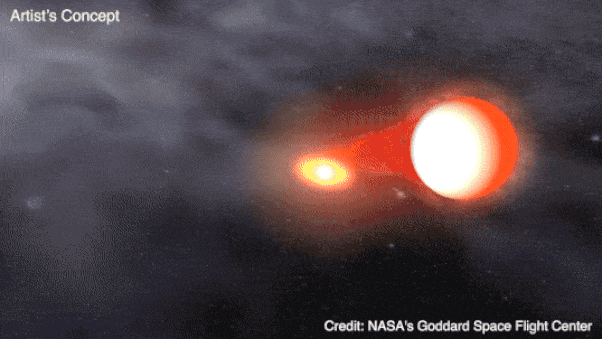
Outro evento cósmico especial ocorrerá este ano e pode ser uma “oportunidade de visualização única na vida”, de acordo com a NASA.
É uma explosão de nova localizada em um sistema estelar a 3.000 anos-luz de distância da Terra e os astrônomos prevêem que será visível a “olho nu” em algum momento de 2024.
“Infelizmente, não sabemos o momento disso tão bem quanto conhecemos o eclipse”, disse Bill Cooke, líder do Meteoroid Environment Office (MEO) da NASA no Marshall Space Flight Center da NASA em Huntsville, Alabama, à Fox News Digital.
“Mas quando isso acontecer, será algo que você lembrará.”
T Coronae Borealis, apelidada de “estrela em chamas”, é uma das 10 novas recorrentes conhecidas na galáxia.
“Uma nova típica consiste em uma estrela, como uma gigante vermelha – uma estrela maior que o Sol – e uma anã branca, que é uma estrela do tamanho da Terra”, disse Cooke.
“E aquela gigante vermelha está despejando material na superfície daquela anã branca. Elas estão orbitando uma à outra e estão bem próximas uma da outra.”
Quando material suficiente é despejado na superfície da anã branca, a temperatura fica tão quente que inicia uma pista termonuclear na superfície dessa anã branca, explicou Cooke.
“When that happens, that white dwarf blows all that material out in space, and it gets very bright, hundreds of times brighter than what it was before,” Cooke said.
“And if it’s close to us or relatively close to us, we will see a new start to appear in our sky.”
Before, that star may have required a telescope to see, Cooke explained, but all of a sudden it will flare into brightness that can be seen with the unaided eye.
“T Coronae Borealis is unusual in that it doesn’t blow its stack once,” Cooke said. “It does it every 79 years or so.”
The last time it exploded was in 1946. This time around, sky watchers will be viewing a star that exploded 3,000 years ago because that’s how long it took the light to get here, according to NASA’s blog.
“At the time that star blew up, 3,000 years ago, the Bronze Age was ending,” Cooke said. “You had the rise of the kingdom of David in Palestine. You had all this stuff going on, but that’s how far back in time that explosion occurred — 3,000 years.”
Right now, T Coronae Borealis is magnitude +10, which means you’d need a small telescope to see it.
“But when it blows its stack, it’s going to reach about magnitude +2,” Cooke said.
“So to give you an idea of how bright that is — it’s about as bright as Polaris, the North Star.”
The explosion — which is the light generated when the white dwarf blows all that matter off its surface — will be visible just to the right of the constellation Hercules.
“You [will] see a new star suddenly appear there,” Cooke said.
“It’ll look like it appears out of nowhere, and it’ll stay visible for about a week before it dims back down,” he added.
And then it will happen again in 79 more years.
“It’s kind of like Halley’s Comet, but most people don’t know much about it,” Cooke said. “Halley gets all the press.”
There have been other nova explosions, like in 1975, Cooke said.

But it wasn’t a recurrent one, and it wasn’t as bright as astronomers expect T Coronae Borealis to appear.
“Is it going to be the star of Bethlehem? No,” Cooke said.
“But there will be a new star appearing in our sky for about a week. And let’s face it, how often do you see a star explode?”
Cooke suggests that as soon as you hear news about the explosion, go outside to see it as soon as possible.
“Bear in mind, you’re only going to have a few days to see it,” Cooke said, adding that the explosion will eventually “fade away.”
Cooke said viewing T Coronae Borealis rivals the Great American Solar Eclipse that occurred on April 8.
“I’ve been to a few eclipses, and it’s one of nature’s most awesome spectacles,” he said.
“But frankly, there are two solar eclipses a year. And if there’s not one over the U.S., I could travel to Egypt in 2027 to go see one. We don’t see a star explode very often. So that’s its uniqueness.”






